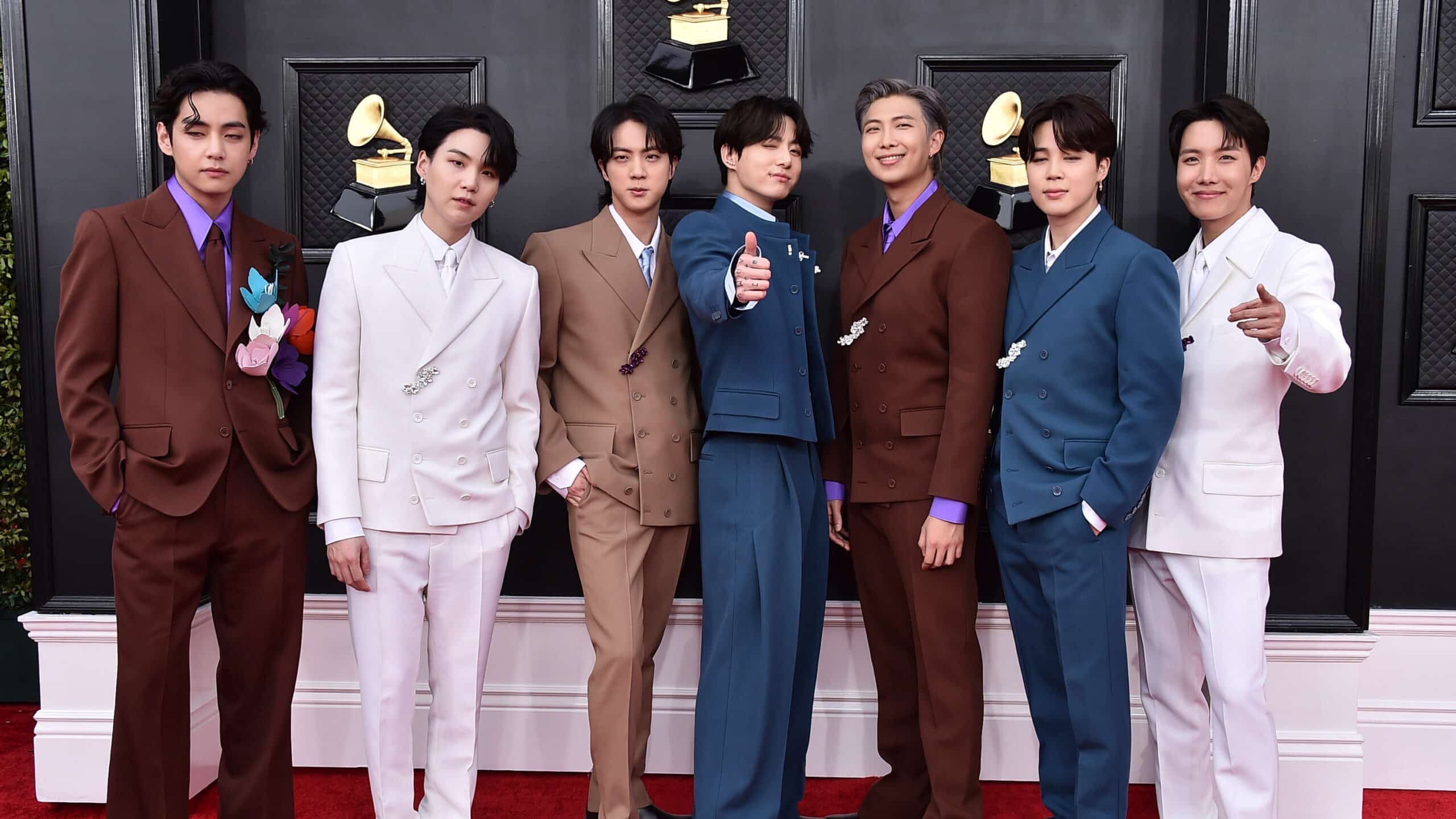
How to Learn Korean with BTS
Are you an enthusiastic fan of the South Korean K-pop sensation BTS? Do you aspire to understand their songs, lyrics, and music videos in a deeper and more meaningful way? Learning Korean can be the key to unlocking a richer BTS experience. Find how to learn Korean with BTS and it’s benefits.
Learn Korean with BTS
Explore the reasons behind the surge in interest and understand the driving forces. Find out what led to a growing fascination with learning the Korean language among BTS fans worldwide. This may include the group’s influence, their cultural impact, or the desire to connect more deeply with their artistry.
Enhance your connection with the group whilst learning Korean can create a stronger bond with BTS. Learning the language allows you to appreciate their songs, lyrics, and messages on a profound level. It will foster a sense of closeness and understanding.
Connect with South Korean culture and whilst learning Korean with BTS. It is not just about the group itself but also about immersing yourself in the rich tapestry of South Korean culture. It’s an opportunity to explore traditions, customs, and history beyond the music.

BTS – Beyond Music
Learn about BTS, the global phenomenon: Gain insights into who BTS is as a group. Understand their origin, history, and evolution from a South Korean boy band to a global sensation. Recognize their impact on the world of music and entertainment. Understand how BTS has transcended music to become cultural icons and philanthropists. Delve into their involvement in various social causes and their role in spreading awareness about important issues.
Also, learn about the significance of the ARMY. Get to know the ARMY, BTS’s dedicated fanbase. Understand the passionate and supportive community that has formed around the group. Recognize the ARMY’s role in BTS’s success and influence.
The Power of Music:
Discover how the captivating music of BTS can serve as a valuable language-learning tool. The qualities of BTS’s music make it an effective medium for language learning. This may include the rhythm, repetition, and emotional connection present in their songs.
Understand the unique advantages of using music to study Korean. Find out what are the benefits of incorporating music into your language-learning journey. This can encompass improved pronunciation and enhanced vocabulary retention. It will promote a deeper understanding of cultural nuances.
Best videos to learn Korean with BTS
By incorporating these videos into your learning routine, you can enhance your comprehension. It will make you appreciate BTS’s music and the Korean language. Below you can find 6 tips to learn Korean with BTS:
1. Lyric Breakdowns:
Many YouTube channels and fan communities create lyric breakdown videos for BTS songs. In these videos, the lyrics are dissected word by word, with explanations provided for the meanings and nuances of the Korean phrases used. For example, you might find a video breaking down the lyrics of BTS’s song “Spring Day.” These breakdowns often include translations and cultural context. It will make it easier to grasp the language.
2. Interviews and Talk Shows:
BTS has been featured on various international talk shows and interviews. Watching these interviews with English subtitles can be a great tool. It will help you understand how the members communicate in both Korean and English. You can observe their pronunciation, intonation, and the way they express themselves. Look for interviews on platforms such as “The Tonight Show Starring Jimmy Fallon” or “The Late Late Show with James Corden.”
3. Reality Shows:
BTS has appeared in reality shows like “Run BTS!” where they engage in various activities and challenges. These shows offer authentic and unscripted interactions among the members. It does provide insights into everyday conversational Korean. Watching these shows can improve your listening skills and help you pick up informal language usage.
4. Vlogs and Behind-the-Scenes Footage:
BTS members occasionally share vlogs and behind-the-scenes videos. Mainly on their official YouTube channel, BANGTANTV. These videos offer a glimpse into their daily lives, including travel vlogs and studio sessions. The videos showcase natural conversations and interactions. Valuable for Korean language learners.
5. Karaoke and Live Performances:
Karaoke videos of BTS songs with Korean lyrics and Romanized transcriptions. A fun and educational way to practice Korean pronunciation and vocabulary. Singing along with BTS during live performances can help improve your accent and rhythm.
6. Fan-Created Content:
ARMY, often creates educational content related to BTS and the Korean language. Look for fan-made videos that focus on teaching Korean phrases or explaining cultural references in BTS’s songs.
Learning Korean with BTS Songs
Now that you’re excited about learning Korean with BTS, let’s check some practical steps to make it happen. Below there is some advice and examples to help you use BTS songs as your Korean language-learning resource:
Start with Their Most Popular Songs
Begin with BTS’s hit song “Blood Sweat & Tears” (피 땀 눈물). Focus on the Korean lyrics and try to grasp the meaning of phrases such as “피 땀 눈물” (blood, sweat, tears) and “내 눈 속엔 너” (you are in my eyes).
Starting with popular songs exposes you to common vocabulary and expressions used in everyday Korean conversation. You’ll see colloquial language and trendy phrases that are relevant in modern Korean culture.
Get the Lyrics
Use websites like Genius or colorcodedlyrics.com to find lyrics for BTS songs. Look for lyrics to “I Need U” (화양연화) and analyse lines like “니가 필요해” (I need you) to understand sentence structure.
Comprehending song lyrics helps you improve your reading skills and vocabulary acquisition. You’ll also become familiar with the poetic and artistic aspects of Korean language usage.
Repeat and Immerse Yourself
Repeat lines from BTS’s “Dope” (쩔어) like “더 쩔어” (more awesome) to practice pronunciation and rhythm. Break down complex sentences like “지금 걔네 식구들도 막 지들이 쩌러” (Right now, even their family members are probably bragging about themselves). Important to understand grammar structures.
Repetition aids in memorisation and language fluency by singing along and dissecting sentences. You will then internalise the language’s natural flow and sentence construction.
Watching Music Videos and Interviews
Watch BTS’s music videos, like “Spring Day” (봄날), with English subtitles. Pay attention to expressions like “왜 또 미뤄지는 거야?” (Why is it getting delayed again?) to improve your listening skills.
Observing how native speakers communicate enhances your listening comprehension. Particularly in real-life scenarios, such as interviews. Subtitled content helps bridge the gap between spoken Korean and its written form.
Learn About Their Cultural References
In the song “IDOL” (아이돌), BTS references the traditional Korean folk painting, “Tiger in a Hurricane.” Research this cultural reference and understand its significance in the song’s context.
Gaining insight into Korean culture through BTS’s music deepens your connection to the language. Cultural references often convey nuanced meanings and contribute to a holistic language-learning experience.
Be Motivated and Use Resources
Join online BTS fan communities or forums to connect with fellow learners. Explore language apps and textbooks alongside BTS songs for a well-rounded learning approach.
Staying motivated is essential in language learning. BTS’s global appeal and inspiring messages can drive your commitment. Utilizing various resources, from language apps to textbooks, ensures a comprehensive learning journey.
Sign up for our offers
Exclusive discounts on your course with Cactus directly on your inbox!

BTS Names in Korean
As you dive deeper into your journey of learning Korean with BTS, it’s essential to explore the fundamentals. The essence that underpin your Korean language adventure. Such as learning BTS member names in Korean and the Korean alphabet, known as Hangul.
Understanding these elements it is essential in your connection to the Korean language and culture. Let’s begin by uncovering the identities of BTS members as expressed in their Korean names. Then we can introduce you to the Korean alphabet, which serves as the very foundation of learning Korean.
BTS Names in Korean:
Jin (진) – 김석진 (Kim Seok-jin): understanding BTS member Jin’s name in Korean, “김석진,” aids in recognizing him in Korean media. It also strengthens your connection to the group’s culture.
The Korean alphabet “진” (Jin) corresponds to the Hangul character “진.” Jin’s full name “김석진” (Kim Seok-jin) includes various Hangul characters, making it an excellent example of Korean script in action.
Suga (슈가) – 민윤기 (Min Yoon-gi): Suga’s Korean name, “민윤기,” reveals his true identity in the language. Learning to pronounce and write it adds depth to your appreciation of his work.
Suga’s stage name “슈가” (Suga) is written in Hangul characters, showcasing the use of Korean script in the entertainment industry. His Korean name “민윤기” (Min Yoon-gi) further exemplifies Hangul.
Jungkook (정국) – 전정국 (Jeon Jung-kook): Jungkook’s Korean name, “전정국,” showcases his Korean heritage. By recognizing this, you become more engaged with his persona.
Jungkook’s name in Korean, “정국” (Jungkook), utilizes Hangul characters. His full name “전정국” (Jeon Jung-kook) demonstrates the combination of Hangul consonants and vowels.
RM (알엠) – 김남준 (Kim Nam-Joon): RM’s Korean name, “김남준,” reflects his cultural roots. Learning it enhances your understanding of his role as BTS’s leader.
RM’s stage name “알엠” (RM) is abbreviated in Hangul characters. His full name “김남준” (Kim Nam-Joon) exemplifies the use of Hangul for personal names.
Jimin (지민) – 박지민 (Park Ji-min): Jimin’s Korean name, “박지민,” provides insight into his identity in the Korean context. Recognizing it enriches your connection to his artistry.
Jimin’s Korean name “지민” (Jimin) is represented in Hangul, highlighting the simplicity and elegance of the script. His full name “박지민” (Park Ji-min) uses Hangul for both the family name and given name
V (뷔) – 김태형 (Kim Tae-Hyung): V’s Korean name, “김태형,” signifies his cultural background. Knowing it helps you connect with his character more authentically.
V’s stage name “뷔” (V) is spelled using Hangul characters, demonstrating their versatility. His full name “김태형” (Kim Tae-Hyung) combines various Hangul elements.
J-Hope (제이홉) – 정호석 (Jung Ho-Seok): J-Hope’s Korean name, “정호석,” embodies his Korean heritage. Understanding it deepens your appreciation of his vibrant persona.
J-Hope’s stage name “제이홉” (J-Hope) is written in Hangul characters. His full name “정호석” (Jung Ho-Seok) features Hangul’s consonants and vowels, showcasing its flexibility.
Next Steps on Learning Korean with BTS
Embarking on a journey to learn Korean with BTS is not only educational and incredibly enjoyable. The music, lyrics, and culture of this iconic K-pop group offer a dynamic and engaging way to learn. A great way to enhance your Korean language skills. With dedication and consistency, you can unlock the beauty of the Korean language and connect with BTS on a deeper level.
So, why wait? Start your exciting journey to learn Korean with BTS today. Elevate your K-pop experience to new heights! Start learning Korean with our Korean lessons. Or one of our Korean courses abroad. Cactus offer a range of Korean classes from beginners to advanced. With weekly lessons, you can choose the best option for you.

 French
French German
German Italian
Italian Spanish
Spanish Arabic
Arabic Cantonese
Cantonese Czech
Czech Croatian
Croatian Danish
Danish Dutch
Dutch English
English Greek
Greek Hebrew
Hebrew Hindi
Hindi Japanese
Japanese Korean
Korean Norwegian
Norwegian Polish
Polish Portuguese
Portuguese Russian
Russian Swedish
Swedish Thai
Thai Turkish
Turkish Ukrainian
Ukrainian